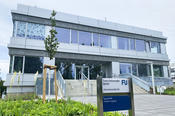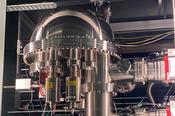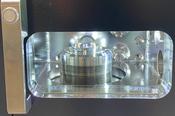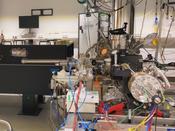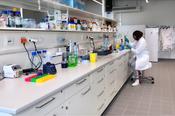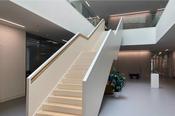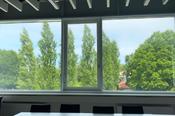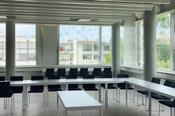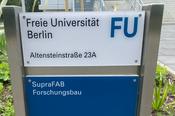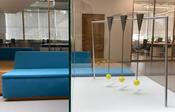Nano Science in Dahlem: SupraFAB research building opened
SupraFAB
Neues Forschungsgebäude SupraFAB (Video: CeDis, FU Berlin; Musik: Humane-Machine, gemafreie von frametraxx.de)
A new research building SupraFAB, "Supramolecular Functional Architectures at Biological Interfaces", was ceremonially opened on the Dahlem campus of Freie Universität Berlin on May 30, 2022. Several physics research groups (Reich, Franke, Bolotin, Heberle and Kozuch) will move into the new sustainable building at Altensteinstraße 23a in the coming months.
News from Jun 07, 2022
In SupraFAB, biologists, chemists and physicists will work interdisciplinary close together. They will investigate the properties and functional mechanisms of metastable supramolecular structures at biointerfaces, for example, in the field of neuronal signal transduction of nerve cells or the interaction of complex supramolecular protein structures on cell surfaces with pathogens.
New fundamental insights into complex supramolecular architectures in biological interfaces are crucial in health research, especially in the development of novel drugs. For example, new research on viscous biosupramolecular compounds at interfaces in the lung could help arm us against viruses or bacteria.
The SupraFAB laboratories will be used jointly by various working groups from physics, biology and chemistry. Here, they will develop new nanoanalytical tools and high-resolution methods for imaging and analyzing structures and supramolecular interactions at interfaces. By combining time-resolved microscopic and spectroscopic methods, novel possibilities for elucidating kinetic processes of supramolecular architectures at interfaces will be created.
The SupraFAB, designed as a sustainable and technically sophisticated building, was constructed between 2016 and 2022 and funded by the Joint Science Conference's (GWK) federal-state program for new research buildings and large-scale facilities.
The SupraFAB offers work space for around 120 researchers and impresses by its transparent and productive ambience. Numerous flexible communication areas invite scientists to intensive scientific exchange and discussions.
The new building stands on a low-vibration, one-meter-thick floor slab. A 40-ton special foundation on air springs provides even further vibration decoupling for the large-scale research instrument LT-STM-AFM with laser coupling. Other large-scale research facilities at the SupraFAB are super-resolution optical microscopes (for example, a so-called STED), spatially resolved infrared spectrometer (sSNOM) and one of Germany's few near ambient pressure X-ray photoelectron spectrometer (NAP-XPS) for the investigation of biomolecular structures near normal pressure. Researchers will soon also have access to a 300-kilovolt cryo-transmission electron microscope, which can be used to study atomically resolved structures frozen in an aqueous environment.
The spokesman of the facility, chemist Prof. Dr. Rainer Haag, emphasizes: "In SupraFAB, we want to live what has connected us scientifically for a long time: In four Collaborative Research Centers, a Research Training Group and the Focus Area Nanoscale, we work intensively together in biology, chemistry and physics and network with other disciplines. SupraFAB has now given us an optimal research environment to crack major challenges of supramolecular architectures at biosurfaces and forge new ideas."
Keywords
- complex supramolecular architectures
- interdisciplinary
- LT-STM-AFM
- nano research
- nano science
- nanophysics
- NAP-XPS
- new building
- physics
- research building
- spatially resolved infrared spectrometers
- sSNOM
- STED
- super-resolution optical microscopes
- SupraFAB
- supramolecular functional architectures at biointerfaces
- supramolecular interactions
- supramolecular structures
- time-resolved microscopic methods
- time-resolved spectroscopic methods
- viscous biosupramolecular compounds
- X-ray photoelectron spectrometer


